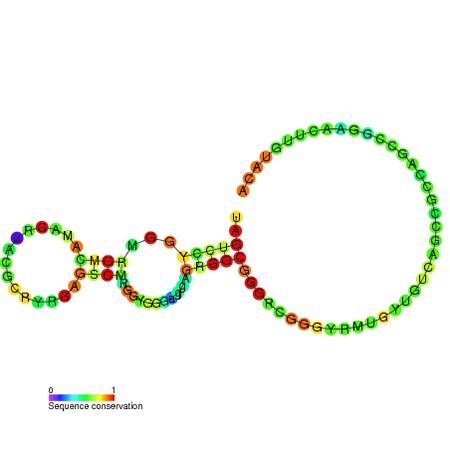- GRIK4
-
GRIK4 (receptor de glutamato, ionotrópico, kainato 4) es un subtipo de receptor de kainato que pertenece a la familia de canales iónicos activados por ligandos codificadas por el gen eGRIK4.[1]
Contenido
Función
Este gen codifica una proteína perteneciente a la familia de los canales iónicos del glutamato activados. Glutamato funciona como el neurotransmisor excitatorio principal en el sistema nervioso central por activación de los canales iónicos activados por ligandos y los receptores acoplados a la proteína G. La proteína codificada por este gen forma canales iónicos heteroméricos funcionales preferenciales de kainato con las subunidades codificadas por los miembros de la familia afin del gen.[2]
Importancia Clínica
Un polimorfismo nucleotido singular (rs1954787) en el gen GRIK4 ha exhibido una respuesta en asociación al tratamiento con antidepresivos.[3]
Alteraciones en GRIK4 se ha asociado con aumento y disminución en el riesgo de trastornos bipolares.[4] Un mecanismo putativo para esta observación es que la variación de la secuencia influye en estructuras secundarias de 3' UTR.
Interferencia con la función GRIK4/KA1 con un anticuerpo específico-KA1 protege contra la muerte celular inducida por kainato.[5] [6]
Importancia evolutiva
El gen GRIK4 desarrolla altas tasas de evolución en primates comparada a roedores y especialmente en el linaje de va desde los primates a homínidos. Además el gen GRIK4 está implicado en el desarrollo del sistema nervioso. De ahí que se piense que ... ion del gen GRIK4 ha jugado una función en un aumento marcado en tamaño y complejidad del cerebro que apareció durante la historia evolutiva hacia el hombre.[7]
Referencias
- ↑ Szpirer C, Molné M, Antonacci R, Jenkins NA, Finelli P, Szpirer J, Riviere M, Rocchi M, Gilbert DJ, Copeland NG (December 1994). «The genes encoding the glutamate receptor subunits KA1 and KA2 (GRIK4 and GRIK5) are located on separate chromosomes in human, mouse, and rat». Proceedings of the National Academy of Sciences of the United States of America 91 (25): pp. 11849–53. doi:. PMID 7527545. PMC 45333. http://www.pnas.org/content/91/25/11849.
- ↑ «Entrez Gene: GRIK3 glutamate receptor, ionotropic, kainate 4».
- ↑ Paddock S, Laje G, Charney D, Rush AJ, Wilson AF, Sorant AJ, Lipsky R, Wisniewski SR, Manji H, McMahon FJ (August 2007). «Association of GRIK4 With Outcome of Antidepressant Treatment in the STAR*D Cohort». Am J Psychiatry 164: pp. 1181–1188. doi:. PMID 17671280.
- ↑ Pickard BS, Knight HM, Hamilton RS, Soares DC, Walker R, Boyd JK, Machell J, Maclean A, McGhee KA, Condie A, Porteous DJ, St Clair D, Davis I, Blackwood DH, Muir WJ. (September 2008). «A common variant in the 3'UTR of the GRIK4 glutamate receptor gene affects transcript abundance and protects against bipolar disorder». Proceedings of the National Academy of Sciences of the United States of America 105 (39): pp. 14940–5. doi:. PMID 18824690.
- ↑ «Discovery Could Help Scientists Stop 'Death Cascade' Of Neurons After A Stroke». Science News. Science Daily (20-01-2009). Consultado el 20-01-2009.
- ↑ Chen ZL, Yu H, Yu WM, Pawlak R, Strickland S (December 2008). «Proteolytic fragments of laminin promote excitotoxic neurodegeneration by up-regulation of the KA1 subunit of the kainate receptor». J. Cell Biol. 183 (7): pp. 1299–313. doi:. PMID 19114596.
- ↑ Dorus S, Vallender EJ, Evans PD, Anderson JR, Gilbert SL, Mahowald M, Wyckoff GJ, Malcom CM, Lahn BT (December 2004). «Accelerated evolution of nervous system genes in the origin of Homo sapiens». Cell 119 (7): pp. 1027–40. doi:. PMID 15620360.
Enlaces externos
Wikimedia foundation. 2010.

